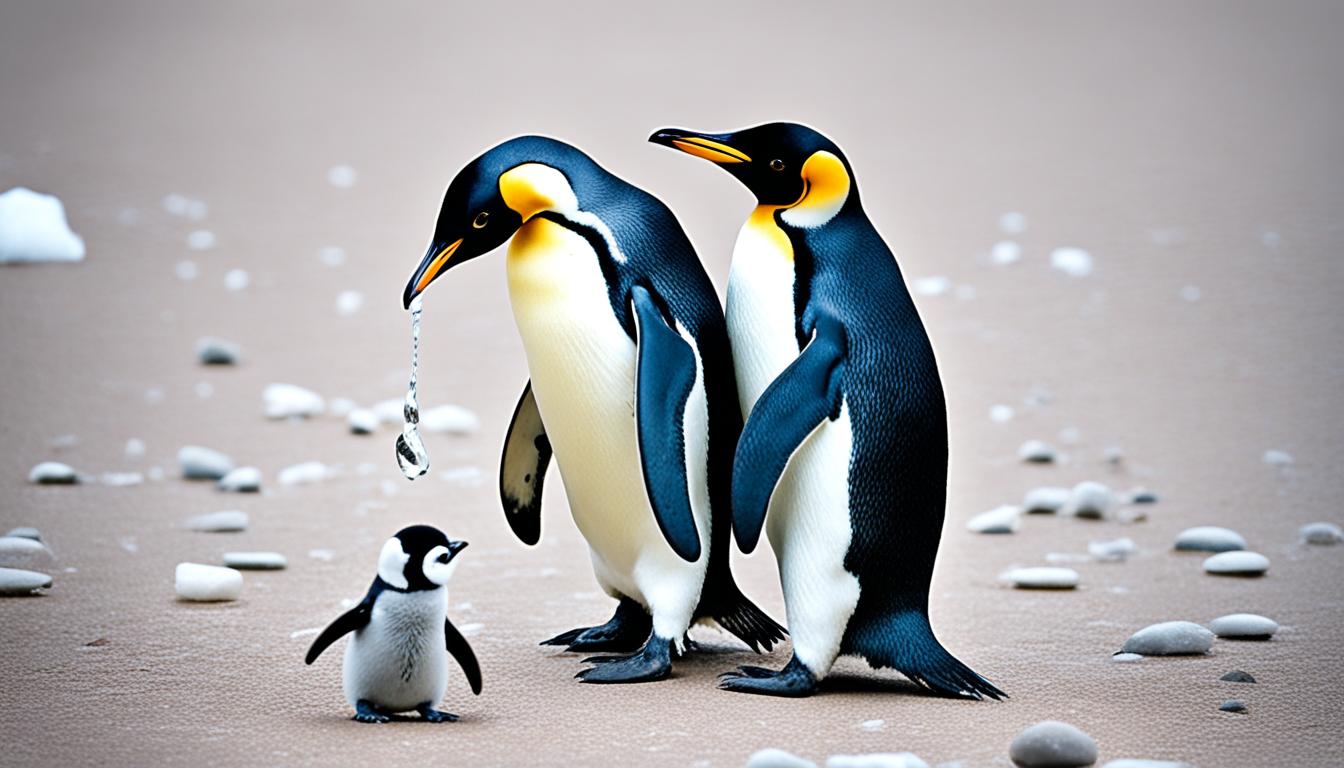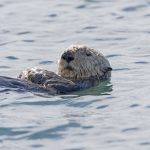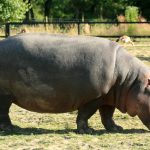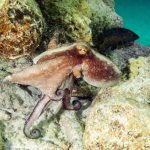Learning about penguin reproduction is truly fascinating. It shows how these amazing birds survive in tough places. It starts with special courtship rituals. These rituals help strengthen the bond between mates and show they are ready to mate.
Ever wondered how penguins reproduce? The process, like in Emperor and King penguins, shows how they adapt to survive during breeding seasons. By looking into penguin breeding habits, you’ll see the key steps from courting to hatching chicks.
Penguin Courtship Rituals
Watching penguins during courtship is truly fascinating. Every year, they return to their breeding sites. Here, males and females go through captivating behaviors. These actions help strengthen their bonds and get ready for breeding.
Understanding penguin mating behavior shows how complex their relationships are. It reveals the detailed and careful way they choose their mates.
Understanding Penguin Mating Behavior
Female penguins are very selective when choosing mates. They look at the male’s size and the quality of his nesting spot. Males also need to show off their best features and nest quality to impress.
This shows how important looks and a good home are for finding a mate.
Physical Displays and Vocalizations
Physical displays are key in courtship. Penguins bow and walk in special ways to catch attention. These actions, along with their calls, help them connect with each other.
Males make unique sounds that echo through the colony. These sounds help them find their mates in a crowded place.
| Behavior | Purpose |
|---|---|
| Elaborate walking | To attract females |
| Bowing | To establish bonds |
| Vocalizations | To signify interest and identity |
| Nest quality display | To enhance mating chances |
Penguins go through these rituals to find mates, strengthen their bonds, and ensure successful reproduction.
How Do Penguins Reproduce?
The penguin reproduction process is fascinating. It starts with the formation of pairs during the courtship season. Bonding rituals are key here. After that, the female lays one egg, a crucial step in the process.
The Penguin Reproduction Process from Courtship to Breeding
Once penguins form a pair, they move to the breeding phase. This happens in tough environments like sea ice. The female lays a single egg, and the male takes on incubation duties.
He fasts and faces harsh weather to protect the egg. This is crucial for the chick’s survival in a challenging world.
The whole penguin reproduction process is timed with the environment. This ensures chicks hatch when they can survive best. It shows how adaptable and resilient penguins are in their homes.
Penguin Egg Laying
Penguin egg laying is a key part of their life cycle. After mating, the female lays one egg, usually from late May to early June. This starts a big responsibility for both parents.
Incubation Period and Parental Roles
The incubation period lasts about 65 to 75 days. During this time, the male penguin takes on a big role. He keeps the egg warm on his feet.
This is very important for the egg to develop right. The male can’t eat during this time. He relies on fat he built up last season.
Surviving Harsh Conditions During Incubation
Surviving the incubation phase is tough for male penguins. They huddle together to stay warm in extreme winter storms. This teamwork is key for their survival and the egg’s chances of hatching.
This hard time shows their dedication. They work hard to make sure their chick will survive and thrive.
Understanding Penguin Breeding Habits
Penguins have unique breeding habits shaped by their social structure, especially in large colonies. These colonies create a safe and supportive environment for breeding. This section looks at how colonies affect mating and how penguins pick their mates.
The Role of the Penguin Colony in Reproduction
In penguin colonies, being part of a group is key to breeding. With many penguins around, it’s easier for them to find a mate. They use sounds and body language to spot potential partners. This helps them increase their chances of having babies.
The tight community also makes them feel safe. This safety is crucial during breeding, helping penguins mate and nest more easily.
Choosing Mates in Large Colonies
Female penguins look at several things when picking a mate in large groups. They check the male’s looks and how well he can find food. This is important for raising their young. They also like males who can find good nesting spots.
Choosing a mate is a big decision in a crowded place. It shows how hard it can be for penguins to find the right partner.
Penguin Chick Development
The journey of penguin chick development shows how these young birds thrive in their world. From the start, they rely on their parents for survival. This early stage is key as they are very vulnerable and need care and warmth.
From Hatchlings to Independent Penguins
When penguin chicks hatch, they are covered in soft down feathers, making them very cold. In the early days, parents care for the young by keeping them warm and feeding them food they’ve regurgitated. This helps the chicks grow strong as they learn to stand and move by themselves.
As they get stronger, the chicks start to explore their world. This is a big step towards becoming independent penguins.
How Parents Care for Their Young
Penguin parents work together to care for their chicks. They take turns feeding and protecting their young, making sure they get enough food. While one parent feeds, the other stays with the chicks.
This teamwork is crucial; chicks need a lot of food to grow fast. Parents show many caring behaviors to help their chicks survive. This shows how important penguin parenting is for the chicks to develop well.
The Impact of Environment on Penguin Reproduction
Understanding how the environment affects penguin reproduction is key to their survival. Penguins live in tough conditions but face big challenges when their homes change. Climate change, changes in sea ice, and shifts in food supply threaten their numbers.
Sea ice changes affect where penguins can nest. Less ice means fewer safe places to breed, making it harder to protect their young. This is crucial for the survival of baby penguins and the health of the population.
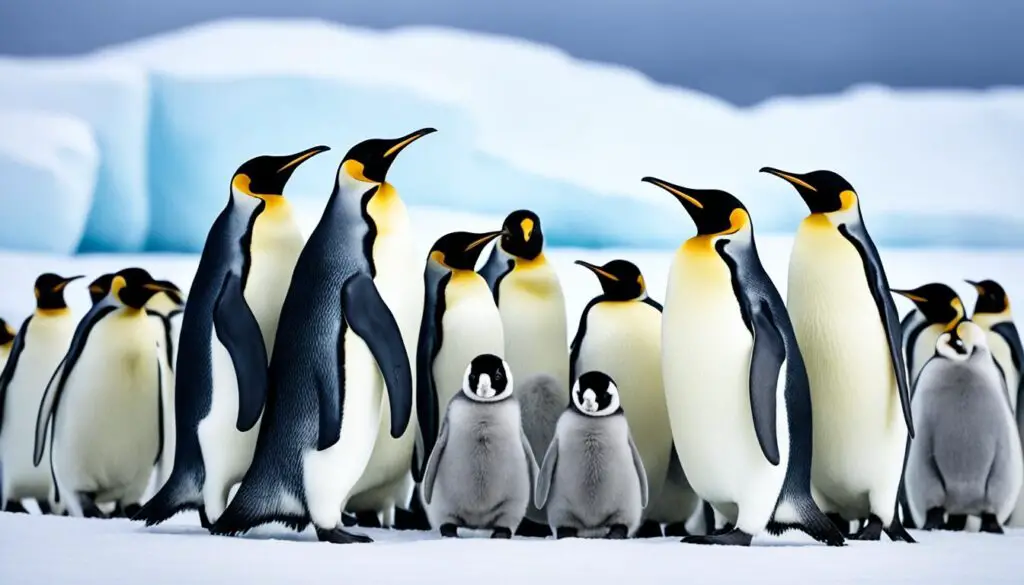
Humans also make things harder for penguins. Things like pollution, destroying homes, and industrial activities hurt their chances to reproduce. Knowing about these issues helps us find ways to save penguin populations.
| Environmental Factor | Impact on Penguin Reproduction |
|---|---|
| Climate Change | Alters breeding habitats and food availability |
| Sea Ice Decline | Reduces nesting sites and increases predation risk |
| Prey Availability | Directly affects chick growth and survival rates |
| Pollution | Harms health and viability of adult penguins and chicks |
Conclusion: The Cycle of Penguin Reproduction
The penguin reproduction cycle is a fascinating journey. It shows how life thrives in tough environments. Each breeding season is more than just mating. It’s a critical phase where penguins deal with food scarcity and harsh weather.
Understanding their reproductive process is key. It includes courtship rituals and raising their chicks. This shows how resilient these creatures are.
Every stage of the penguin reproduction cycle is crucial. Laying eggs, incubating them, and raising the young are all important. Penguins work together in colonies, showing the power of social structures.
This teamwork helps increase the survival rates of their young. It highlights how connected their environment and social life are.
With threats to penguin habitats, studying their cycles is vital for conservation. By understanding their reproductive habits and challenges, we can help protect these amazing species. This knowledge supports efforts to keep them safe in their natural homes.

